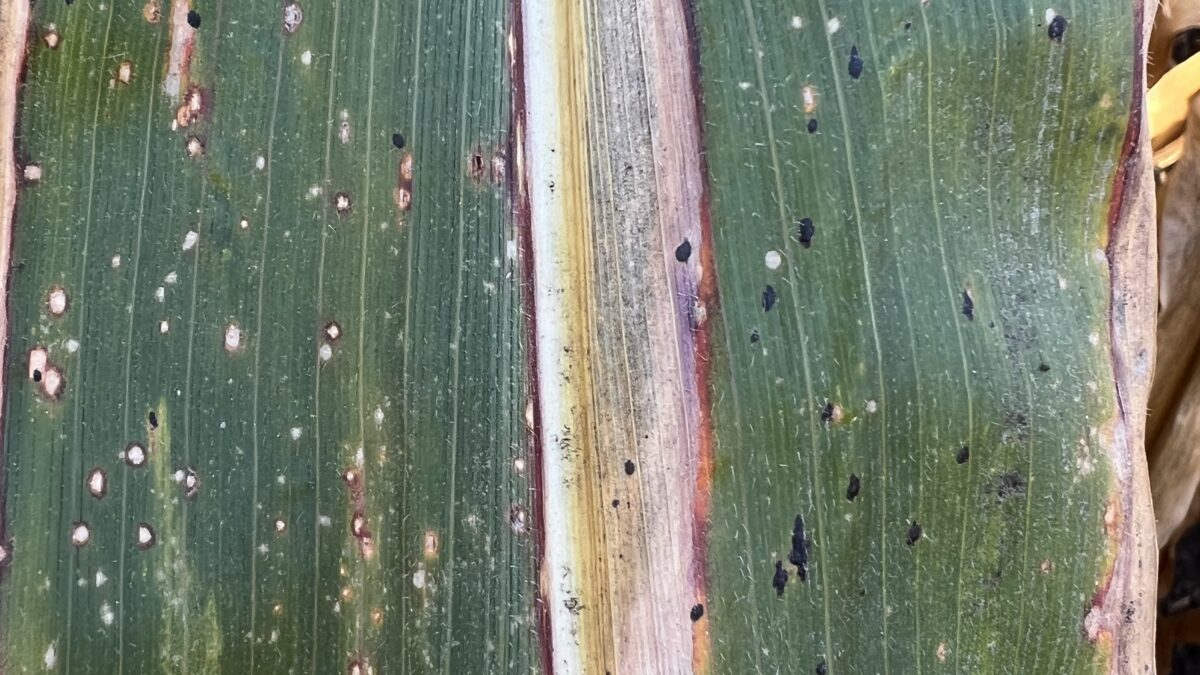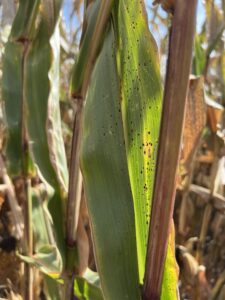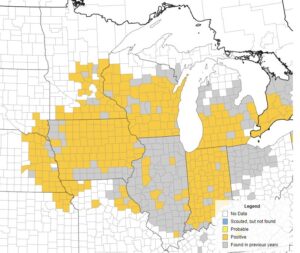Tar Spot: Just Another Buzzword or the Next Challenge for the North Country?

Tar spot is relatively new to U.S. farmers. It has not yet significantly affected our backyard, but it continues pushing closer and closer to home. Tar spot fungus overwinters on infected corn residue, and its spores move with the wind, rain and weather patterns.

Tar spot can cause significant yield loss. Photo credit: Aaron Arenholz
Tar spot can cause significant yield loss, with growers reporting upwards of 100 bushels taken off the top end of their corn yield where pressure was heavy.
Tar spot thrives in cool, wet years. Morning dews, lingering fogs, and extended periods of leaf wetness all contribute to disease incidence. In many ways, tar spot in corn thrives in the same environment as white mold in soybeans. The disease was first discovered in Indiana in 2015 and Minnesota in 2019. As of 2021, it was found halfway across the state in Morrison and Stearns counties. The fact that it has moved so far in such a short time – especially during dry years – is very concerning.
Tar spot is polycyclic, meaning it can infect, produce spores, re-infect, and spread again in about 20 days. Around the first two weeks of July, it shows up as black, raised lesions on lower leaves. As infection continues, spots move upward in the leaf canopy. As it spreads, it inhabits large portions of the leaf surface, inhibiting the plant’s capability to absorb sunlight. Yield loss comes from less photosynthetic capacity during grain fill. Kernel abortion, reduced kernel weight, and stalk integrity issues result from insufficient sunlight during cob-fill.
How can you manage tar spot when it shows up?
Hybrid Selection: Although genetics don’t exist to stop this fungus completely, proper hybrid selection can reduce losses. Only half the hybrids in our lineup are currently rated for the disease, but we’ll provide those ratings in the coming years. Hybrids with strong health characteristics and good stay-green have fared the best.
Rotation: Planting corn in a field with heavy tar pressure from the previous season is a sure way to run into issues. With high levels of inoculum overwintering on the corn residue, tar spot will be quick
to follow. When tar spot is identified, plant a non-host crop the next year to break the inoculum cycle and reduce the field’s load.

Current map from IPM Corn website: https://corn.ipmpipe.org/
Tillage: Sorry no-tillers! If you are no-tilling, it’s likely because you live in an area with limited rainfall and drier conditions. Luckily, tar spot shouldn’t be a problem in these drier areas. If it is identified,
tillage will be necessary to cover and manage some of the infected corn residue, keeping it from spreading.
Fungicide: Fungicide has proven to help significantly. A single well-timed application around VT-R2 has saved 30-40bu over checks.



